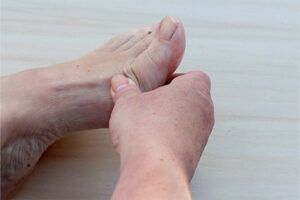Dermatology
Plaque Psoriasis
Real-World Experience With IL-17 and IL-23 Inhibitors for Plaque Psoriasis
The continued collection of real-world evidence in the treatment of plaque psoriasis will aid in the evaluation of patient outcomes and satisfaction and will assist in clinical decision making when choosing therapeutic agents, including interleukin-17 (IL-17) and -23 (IL-23) inhibitors. This topic was addressed at the 2023 Fall Clinical Dermatology Conference.
Following these proceedings, featured expert Boni E. Elewski, MD, was interviewed by Conference Reporter Medical Writer Rick Davis. Dr Elewski’s clinical perspectives on this topic are presented here.
Data were presented at the 2023 Fall Clinical Dermatology Conference, including those presented by Joseph F. Merola, MD, in his session, that reflect what I have observed in my clinical practice.
The Austrian Psoriasis Registry revealed that 1 of every 4 to 5 patients who are treated with anti–IL-23 drugs under real-world conditions does not achieve a satisfactory treatment response. While I agree that this may be the case overall, I do think that those results are likely influenced by which IL-23 inhibitor is being used, as different agents may have different potencies and rates of efficacy. For example, IL-23 blockers that selectively target the p19 subunit are significantly better than the IL-12/23 blocker, which targets the p40 subunit.
At the conference, I presented the case of a patient who had a Psoriasis Area and Severity Index score of 30. He had failed treatment with IL-17 inhibition and adalimumab. The psoriasis on his face was severe, and he was covered with thick, indurated, beefy-red, scaly plaques on the scalp, genitals, trunk, and extremities. The patient was so embarrassed that he did not look me in the eye. After 6 months on an IL-23 inhibitor, however, his skin totally cleared, and his Psoriasis Area and Severity Index score was 0. If this patient does go on to develop psoriatic arthritis later in life that is not responding to IL-23 inhibitor therapy, the IL-23 inhibitor may still be beneficial for the psoriasis, so an option could be to add an oral therapy such as apremilast for his psoriatic arthritis. This is an example of how it can be helpful to incorporate real-world experiences and clinical data together to best treat our patients.
One difference between IL-17 and IL-23 inhibitors is the speed of response. IL-17 inhibitors can provide a very rapid response, which would be taken into consideration with treatment selection. For example, for a patient who is getting married in 1 month and wants their psoriasis to be cleared quickly, I may consider using an IL-17 inhibitor. However, because these IL-17 blockers reduce activity of the circulating IL-17 cytokines, they need to be given at fairly frequent intervals. Secukinumab and ixekizumab are dosed monthly after loading dosages. The newly US Food and Drug Administration–approved IL-17A and IL-17F blocker bimekizumab is dosed every 4 weeks initially, followed by every 8 weeks after the first 16 weeks of treatment.
IL-23 inhibitors can take longer to work because they reduce the population of cells that produce IL-17, which takes time. However, once the cell population is reduced, patients do not need the drug as often, which is why IL-23 inhibitors are given every 2 to 3 months. This can be desirable for patients who prefer less frequent dosing. Both IL-17 and IL-23 inhibitors have also shown durability of response, with some data demonstrating their long-term efficacy of maintenance of response.
In terms of safety, IL-17 inhibitor therapy is associated with an increased risk of candidiasis and inflammatory bowel disease. You do not have to worry about these issues with IL-23 inhibitors, and, actually, the IL-23 blockers can be used to treat inflammatory bowel disease. For my patients with plaque psoriasis, I will check their blood and platelet counts, chemistries, and liver function, in addition to ordering a tuberculosis test and checking for the presence or absence of hepatitis, before initiating biologic therapy. There are data showing that patients with a history of latent tuberculosis have not converted while on IL-17 or IL-23 inhibitor therapy. So, these drugs are quite safe. This is all great news for our patients with psoriasis.
Elewski BE, Armstrong AW, Boh EE, Callis-Duffin K. Psoriasis & psoriatic arthritis – so now what do I do? Session presented at: 2023 Fall Clinical Dermatology Conference; October 19-22, 2023; Las Vegas, NV.
Graier T, Weger W, Jonak C, et al. Real-world effectiveness of anti-interleukin-23 antibodies in chronic plaque-type psoriasis of patients from the Austrian Psoriasis Registry (PsoRA). Sci Rep. 2022;12(1):15078. doi:10.1038/s41598-022-18790-9
Kontzias C, Chandy R, Feldman SR. Choosing systemic agents for psoriasis. Ann Pharmacother. 2023 Jun 21:10600280231170031. doi:10.1177/10600280231170031
Merola JF, Strober BE. Seminar-in-depth: tips in the use of IL-17 inhibitors in dermatology. Session presented at: 2023 Fall Clinical Dermatology Conference; October 19-22, 2023; Las Vegas, NV.
Reich A, Pinter A, Maul J-T, et al. Speed of clinical improvement in the real-world setting from patient-reported Psoriasis Symptoms and Signs Diary: secondary outcomes from the Psoriasis Study of Health Outcomes through 12 weeks. J Eur Acad Dermatol Venereol. 2023;37(9):1825-1840. doi:10.1111/jdv.19161
Ruggiero A, Potestio L, Camela E, Fabbrocini G, Megna M. Bimekizumab for the treatment of psoriasis: a review of the current knowledge. Psoriasis (Auckl). 2022;12:127-137. doi:10.2147/PTT.S367744
Ter Haar ELM, Van den Reek JMPA, Gaarn Du Jardin K, Barbero-Castillo A, De Jong EMGJ, Lubeek SFK. Efficacy and safety of tildrakizumab in older patients: pooled analyses of two randomized phase III clinical trials (reSURFACE 1 and reSURFACE 2) through 244 weeks. Acta Derm Venereol. 2023;103:adv17752. doi:10.2340/actadv.v103.17752
Warren RB, See K, Burge R, et al. Rapid response of biologic treatments of moderate-to-severe plaque psoriasis: a comprehensive investigation using Bayesian and frequentist network meta-analyses. Dermatol Ther (Heidelb). 2020;10(1):73-86. doi:10.1007/s13555-019-00337-y
This information is brought to you by Engage Health Media and is not sponsored, endorsed, or accredited by the 2023 Fall Clinical Dermatology Conference.











